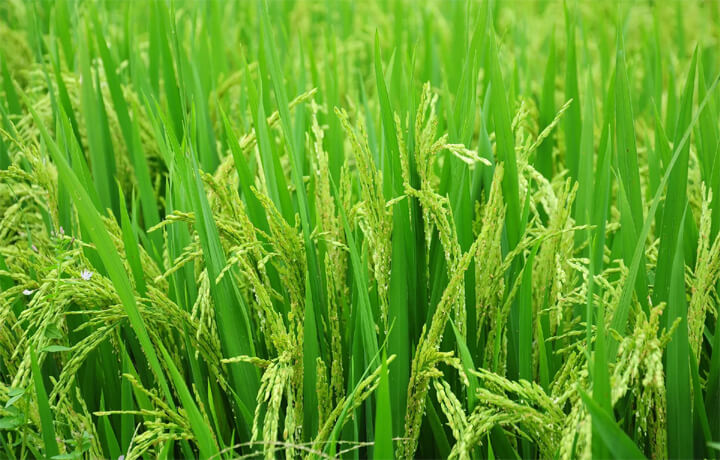
Uganda, in collaboration with the Ministry of Agriculture, Animal Industry and Fisheries (MAAIF), the Food and Agriculture Organization of the United Nations (FAO), and Chinese firm Shanghai Agro-Biological Gene Centre (SAGC), has introduced a new high-yielding and weather-friendly rice variety aimed at enhancing farmers’ production in the East African nation.
The newly developed hybrid rice, known as WDR-73, was created by SAGC in partnership with the National Agricultural Research Organisation (NARO) as part of Phase 3 of the FAO-China South-South Cooperation (SSC) Programme.
This innovative rice variety addresses challenges related to drought and eliminates the need for planting in paddies. It features a medium maturity period of 130 days, moderate aroma, straw-colored grains with a curved tip, and large grains similar to the Supa variety. Additionally, it exhibits medium-sized grains weighing 25g per 1,000 grains and displays tolerance to various diseases such as RYMV, Rice blast, BLB, Narrow leaf spot, and BLS.
The uniqueness of WDR-73 lies in its ability to combine high yield potential, water conservation, and drought tolerance, distinguishing it from traditionally irrigated paddy rice varieties.
Charles Owach, assistant FAO representative in charge of programs, emphasized the positive impact of this new rice variety on food security and household income based on studies conducted in Kenya, Ghana, and Uganda. Among the 50 tested rice varieties, WDR-73 demonstrated its potential to improve yields by approximately 30% compared to local varieties.
Owach urged farmers to adopt this new rice variety, highlighting its competitive advantages in terms of increasing incomes, safeguarding against hunger and malnutrition, and addressing climate and drought challenges.
Stephen Katabazi, a senior inspector at MAAIF, expressed his belief that the introduction of WDR-73 would contribute to resolving food insecurity in Uganda and position the country as a potential food basket for Africa.
Pilot cultivation of WDR-73 was conducted in Lukaya, Luwero, and Arua districts prior to its official launch. The pilot farms demonstrated remarkable yield increases, ranging from 4.35 to 6.06 tonnes per hectare.
Katabazi shared specific results, stating, “In Arua, with a growth duration of 90-95 days, the variety yielded up to 4.35 tonnes per hectare, while direct-seeded WDR-73 in Luwero yielded between 6-8 tonnes per hectare.”
To ensure the sustainability of this initiative, agricultural officers from 30 districts, along with 100 lead demonstration farmers and producers from various districts, underwent a comprehensive 5-day training session at Wills and Wash Hotel in Mbale, equipping them with the necessary skills for successful cultivation.
Antonio Querido, FAO Representative in Uganda, emphasized the importance of water-saving and drought-resistant rice in achieving food security, nutrition, and income stability while simultaneously addressing climate challenges.
Querido added, “Although rice is a staple for more than 3.5 billion people, including the majority of the world’s poor, it can be a challenging crop to cultivate. However, the new variety will simplify the process for growers.”
Peter Muyimbo, from the Ministry of Agriculture and coordinator of the SSC project, highlighted the government’s collaboration with the China-Uganda Agriculture Cooperation Industrial Park in Luwero, established in 2016. This partnership ensures the widespread distribution of seeds to farmers, facilitating their access to this groundbreaking rice variety.
The launch of WDR-73 holds tremendous promise for Uganda’s agricultural landscape, empowering farmers with a climate-smart and high-yielding rice variety that not only enhances productivity but also contributes to food security, income generation, and resilience against climate change.
Stay updated with the latest farming tips and agriculture industry news from Africa by subscribing to our newsletter. Don’t miss out on valuable insights and updates. Follow us on Twitter, LinkedIn, and Facebook to join our farming community and stay connected with us.




















Leave a Reply